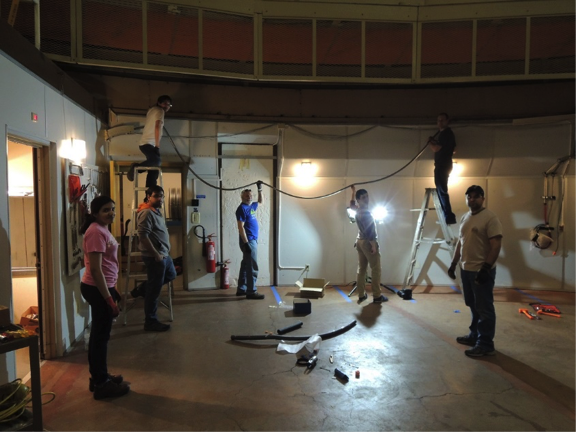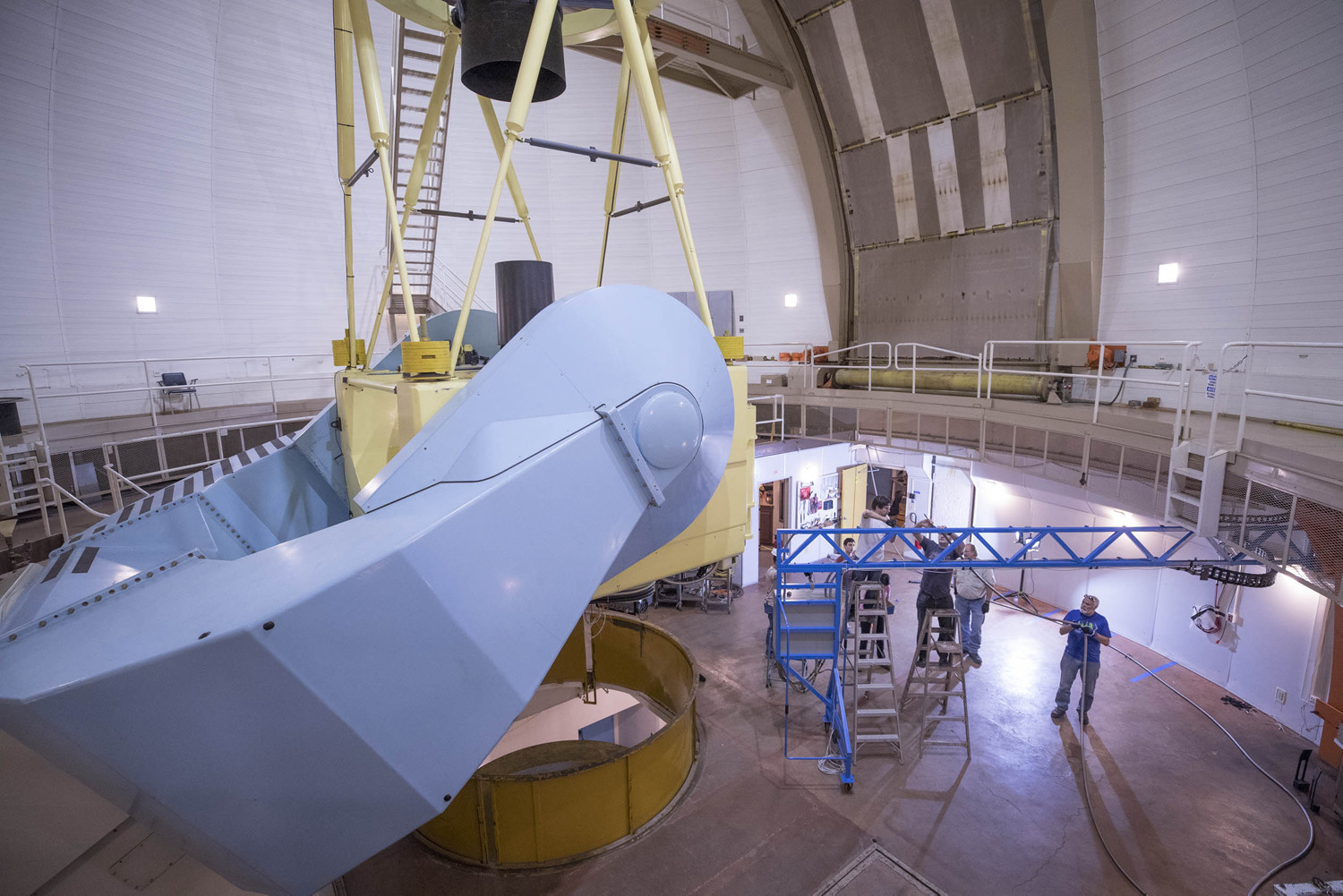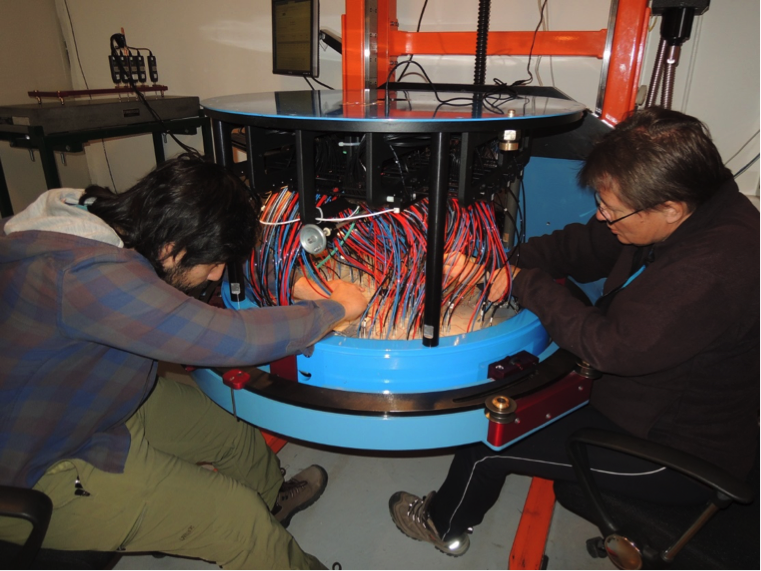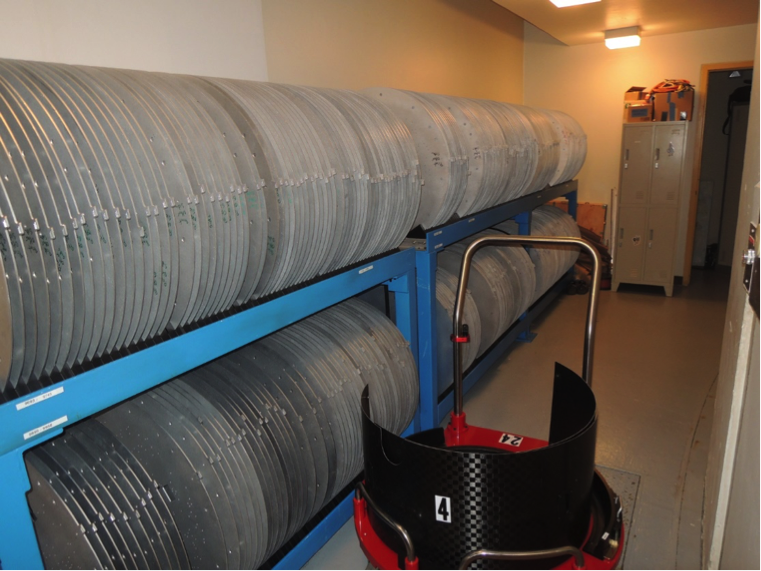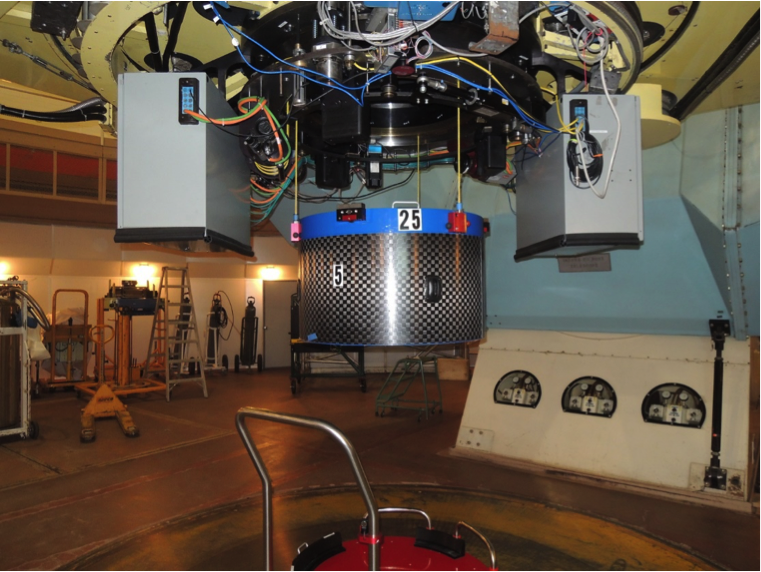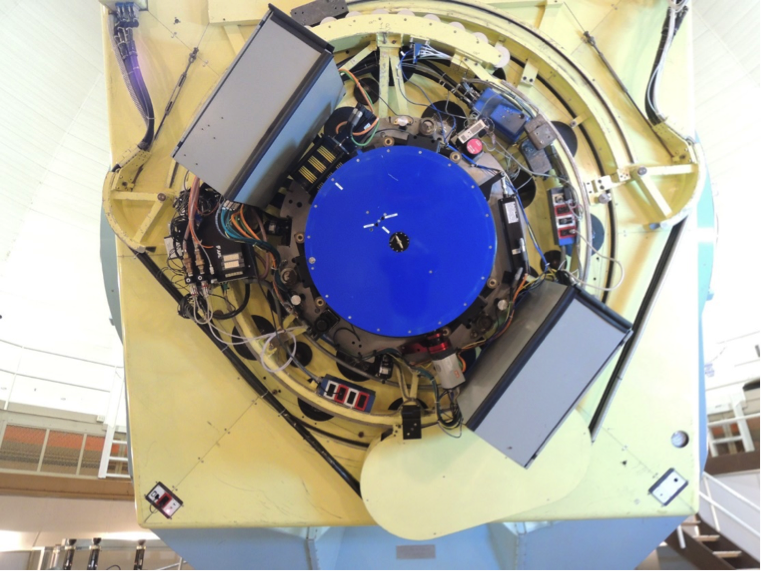Telescopes and Instruments
Explore below to learn more about the SDSS telescopes, the SDSS spectrographs, and the SDSS imager.
Telescopes
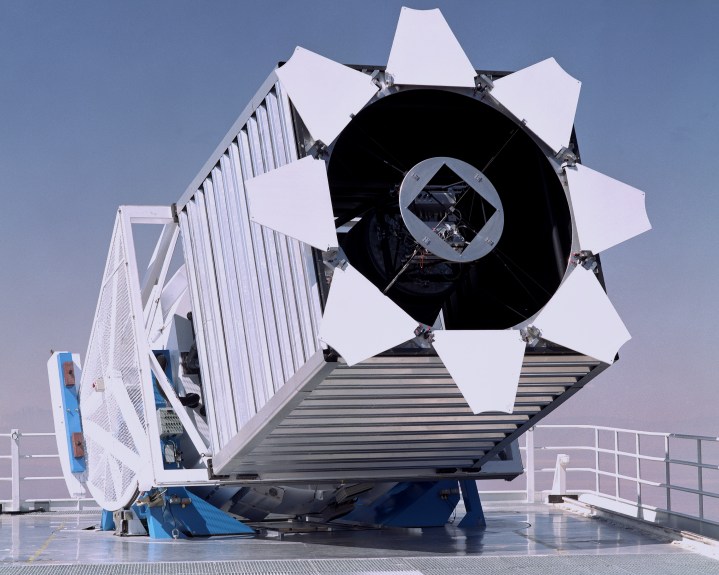
The Sloan Foundation 2.5m Telescope at Apache Point Observatory
The SDSS uses a dedicated 2.5-m f/5 modified Ritchey-Chrétien altitude-azimuth mount telescope located at Apache Point Observatory, in south east New Mexico in the south west of the United States (Latitude 32° 46' 49.30" N, Longitude 105° 49' 13.50" W, Elevation 2788m). The telescope, with two corrector lenses, features in a 3° distortion-free field of view. The telescope is described in detail in a paper by Gunn et al. (2006).
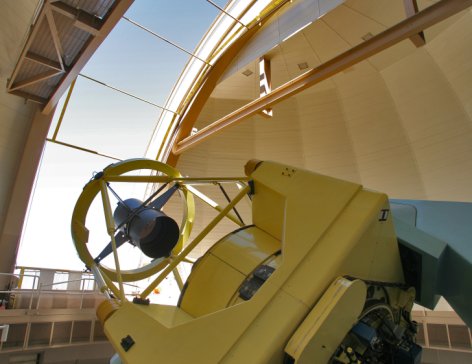
The Irénée du Pont Telescope at Las Campanas Observatory
The fourth phase of the SDSS included its first observations obtained from the Southern Hemisphere. The southern observations are taken with the Irénée du Pont Telescope at Las Campanas Observatory in the southern part of the Atacama region of Northern Chile (Latitude 29° 0' 52.56" S, Longitude 70° 41' 33.36" W, Elevation 2380m). The du Pont telescope is a Ritchey-Chrétien 2.5-m f/7.5 equatorial mount telescope with a Gascoigne corrector lens and provides a 2.5 degree field-of-view. The telescope is described in detail in a paper by Bowen & Vaughan (1973).
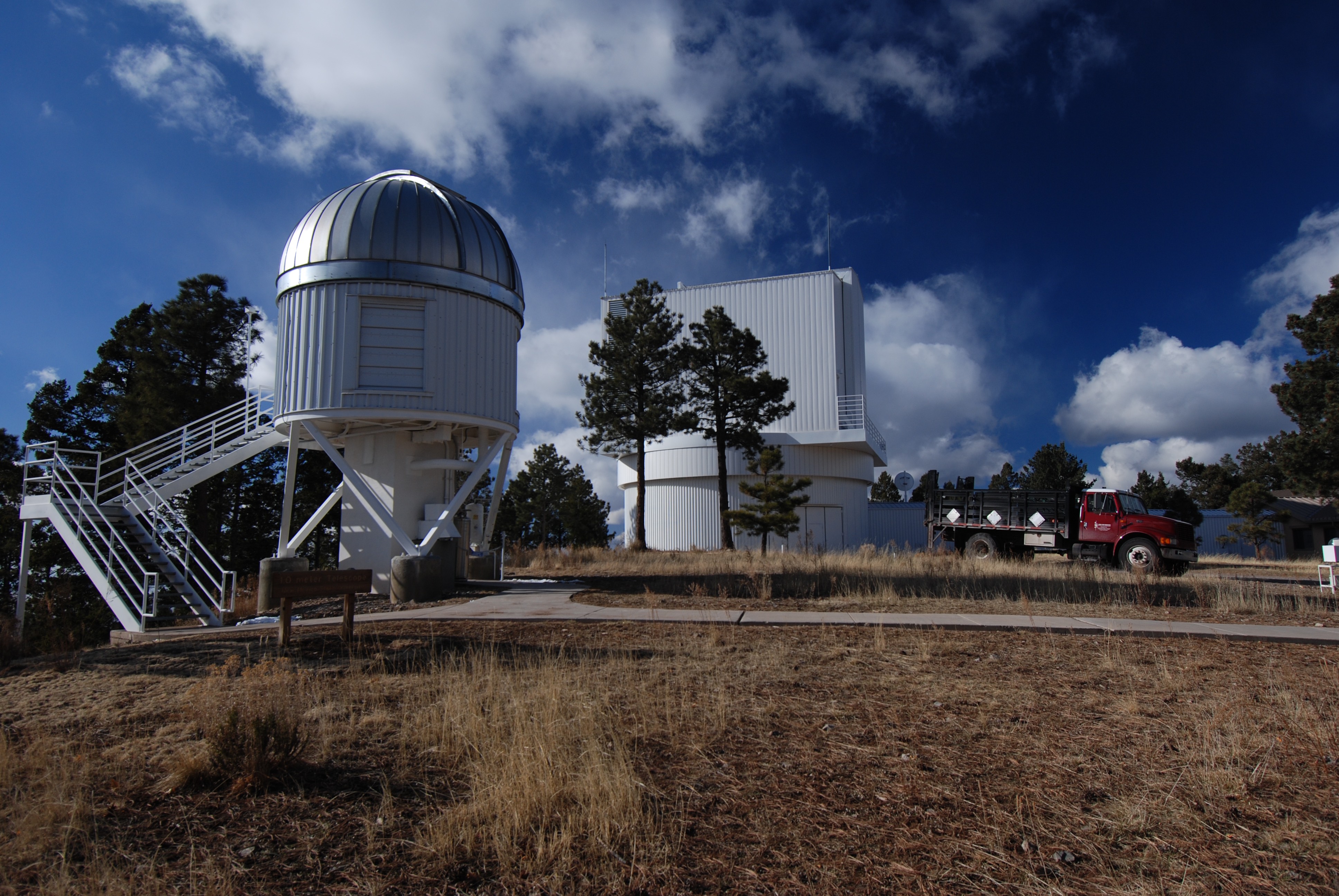
A number of important stars that are too bright to observe with the larger telescopes are instead observed with the NMSU 1-meter telescope at APO (Latitude 32° 46' 49.30" N, Longitude 105° 49' 13.50" W, Elevation 2788m). A fiber lead connects the APOGEE-North spectrograph to this facility, which contains a Ritchey-Chretien reflector set on an altitude-azimuth mount. The details of this telescope can be found in Holtzman et al. (2010).
eBOSS / BOSS
The eBOSS spectroscopic survey continues to use the spectrographs built for BOSS. These two identical spectrographs are rebuilt from the original SDSS spectrographs, which were used for the SDSS Legacy and SEGUE surveys. Each spectrograph has two cameras, one red and one blue, with a dichroic splitting the light at roughly 6000 Å and a full wavelength range from 3600 to 10,400 Å. Additional information can be found on the BOSS spectrograph page.
APOGEE-2 / APOGEE
At Apache Point Observatory, the APOGEE-2 survey continues to employ the high-resolution, near-infrared spectrograph used for the APOGEE-1 survey. A close copy of the instrument was constructed for Las Campanas Observatory. The APOGEE instruments are custom-built, multi-object spectrographs that record the 1.51-1.70 micron spectrum of 300 targets simultaneously, with a spectral resolution of ~22,500. Additional information can be found on the APOGEE spectrographs page.
MaNGA
MaNGA is a galaxy survey that is obtaining detailed integral field unit (IFU) resolved spectroscopy measurements of 10,000 nearby galaxies. MaNGA uses the eBOSS / BOSS spectrograph, but instead of placing a single fiber on each galaxy, it uses specially-designed hexagonal ferrules to close-pack the circular fibers into hexagonal bundles. Each MaNGA cartridge contains 17 bundles ranging in size from 19 to 127 fibers, each enabling detailed observations of 17 galaxies simultaneously. Additional Information can be found on the MaNGA fiber feed page.
MARVELS
MARVELS used a specially-built interferometric spectrograph to obtain high-precision radial velocity measurements of stars looking for exoplanet candidates. In contrast to the more traditional high-resolution echelle spectrographs, MARVELS used a new approach to measure radial velocities. The spectrograph is a fiber-fed dispersed fixed-delay interferometer (DFDI), a combination of Michelson interferometer and a medium resolution (R~6,000-10,000) spectrograph, which overlays interferometer fringes on a long-slit stellar spectrum. Additional Information can be found on the MARVELS spectrograph page.
The SDSS Camera
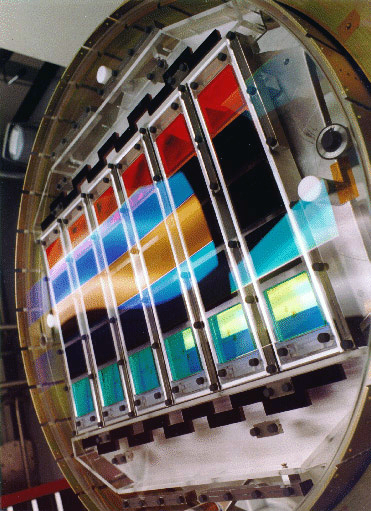
The SDSS's imaging camera is now at the Smithsonian, but all the images it collected are available online. The imaging camera collected photometric imaging data using an array of 30 SITe/Tektronix 2048 by 2048 pixel CCDs arranged in six columns of five CCDs each, aligned with the pixel columns of the CCDs themselves. SDSS r, i, u, z, and g filters cover the respective rows of the array, in that order. The survey operated the instrument in a drift scan mode: the camera slowly reads the CCDs while the telescope moves along great circles on the sky so that images of objects move along the columns of the CCDs at the same rate the CCDs are being read. As an image of an object moves along the column of the CCDs, a CCD in each row collects data on that object. Therefore, the camera produces five images of a given object, all from the same column of CCDs, one from each CCD in that column. It takes an object 54 seconds to move from the beginning of a CCD to the end, so the effective exposure time in each filter is 54 seconds. Because there is some space between the rows of CCDs, it takes an image 71.7 seconds to move from the beginning of one row to the next. Each row corresponds to a different filter, so each object has one image in each filter, taken at 71.7 second intervals. A detailed description of the imager can be found in Gunn et al. (1998), and additional information can be found on the Camera page.
Northern Infrastructure & Operations
A time-lapse video of one night of operations at the SDSS telescope
During the night, an observer changes the cartridge to observe a new set of stars or galaxies roughly every hour. Each cartridge contains fiber-optic cables plugged into holes in a large aluminum plate. The positions of the precision drilled holes correspond to the positions of objects in the night sky. Thus, each fiber once "plugged" into one of the drilled holes is able to observe a single star or galaxy.
The “bright time” observing is during the full moon, the “dark time” is before moonrise, with the moon (not the sun!) rising shortly before the end of the video. Credit: John Parejko (University of Washington) and the SDSS collaboration.
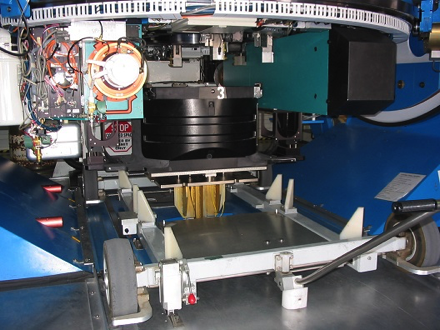
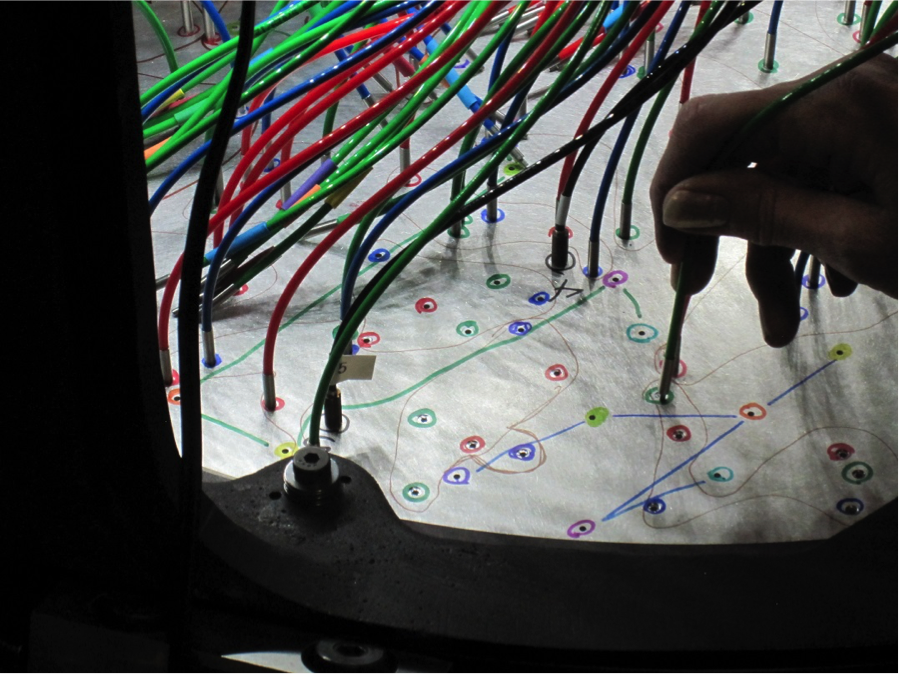
Southern Infrastructure & Operations
